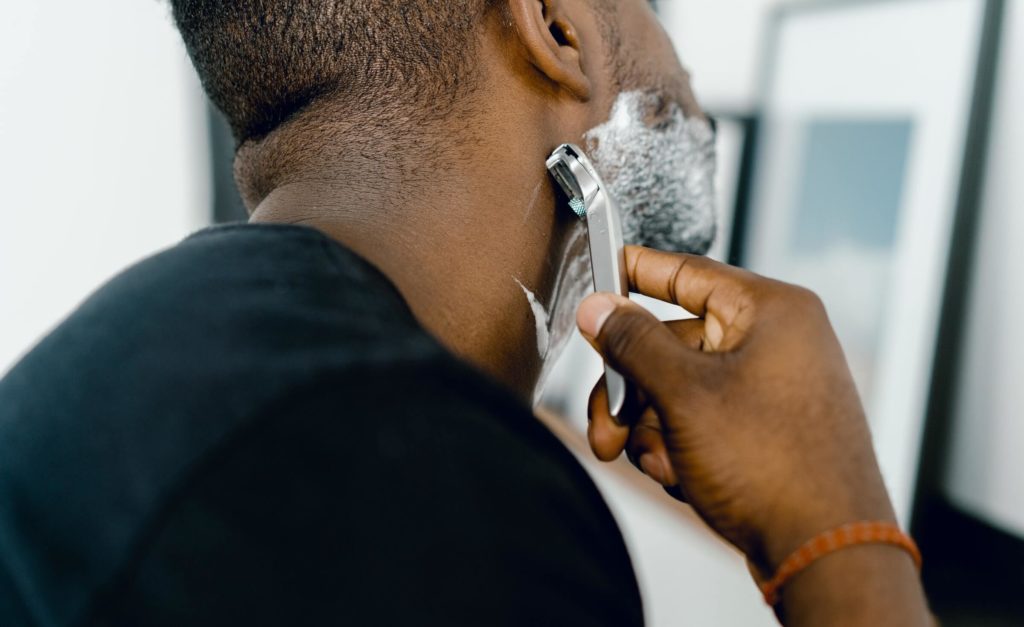Razor Bumps and Ingrown Hairs on the Face
Razor Bumps and Ingrown Hairs on the Face
For most men, grooming one’s facial hair can be a chore. Compared to men who regularly trim their facial hair, those who opt for a close shave have to deal with dreaded razor bumps which can be quite a nuisance. “Razor bumps” and “ingrown hairs,” which are the common names for the condition pseudofolliculitis barbae, are common among men after shaving their faces. With this guide, we’ll teach you how to treat your razor bumps and prevent them from occurring.
What do razor bumps look like?
Razor bumps are skin-colored, red, or dark bumps around hair follicles. There may also be pimples around the hair follicles. Ingrown hairs are coiled strands of air that are trapped under the skin but seen on the surface. The neck, jaw, and lower face are all common sites of razor bumps. They may feel irritated and itchy but you should avoid scratching them because that can potentially cause scarring and/or infection.
How do razor bumps happen?
After shaving, the tips of the hair shafts become sharp and capable of penetrating the skin. These hairs can penetrate the skin either before or after they have exited the hole in the skin that they grow through. The bumps and pimples form as an inflammatory response to the trapped hairs. Razor bumps are also a lot more common among black men than white men. This is due to the nature of their tightly coiled hair which is more likely to curve back to penetrate the skin after shaving.
Consult our online dermatologists today and get an answer on your concern within hours.
How do I treat them?
The most effective intervention for razor bumps is to stop shaving and change hair removal methods. Even after one stops shaving, razor bumps may continue for the first couple of weeks due to the growth of recently shaved hairs and progression into new razor bumps. Topical 2.5% hydrocortisone cream can be applied to inflamed razor bumps for up to three to four weeks. Ingrown hairs may be nudged out with a pointy object such as a needle. However, ingrown hairs should NOT be plucked as this can cause further irritation.
An alternative to shaving is the use of electric clippers. At first, try to avoid trimming the hairs to a length less than 5 mm. Over time, you can try gradually shortening the hair beyond this point and stopping if the new length causes new episodes of razor bumps. Trimming the hair any shorter than 1 mm will likely cause razor bumps to return.
Another alternative to shaving is the use of chemical depilatories. They dissolve hair and leave the tip of the hair shaft softer and less able to penetrate the skin. However, depilatories should be tested somewhere else on your body before using it on your face to see if it causes significant irritation. You may also want to avoid using depilatories every day to limit potential irritation.
Laser hair removal is a major treatment option that decreases the density and thickness of the facial hair over the long-term by destroying hair follicles. Multiple sessions are necessary to significantly reduce hair growth.This treatment is most effective in those who have darker hairs.
Following these treatment options should allow razor bumps to improve within a few months. The hyperpigmentation or darkened skin can take several months or longer to fade. Hyperpigmentation can be treated with cosmeceutical hydroquinone, alpha arbutin, niacinamide, azelaic acid, and/or kojic acid.
Try our FREE dermatology search engine and get peace of mind within a second
What if I want to continue shaving?
Continuing to shave will require some modifications to your regimen to reduce razor bumps. Liberal use of shaving cream or applying a warm wet washcloth before shaving softens the hair shaft and decreases the formation of sharp hair tips. When shaving, make sure to do so with the grain to decrease irritation. Use a single blade razor and try your best to NOT stretch the skin when shaving to decrease the likelihood that the hair will withdraw into the hair orifice. You can also dislodge ingrown hairs by gently scrubbing your face with a wet washcloth each day.
If you have noticed a persistent issue or anything else that is suspicious on your skin, then we would recommend consulting a dermatologist for a closer examination. Here at First Derm, we have online board-certified dermatologists ready to take a look at your skin concerns. Simply upload an image anonymously and we’ll do the rest!
Ask a Dermatologist
Anonymous, fast and secure!

Medical student at Rutgers New Jersey Medical School and aspiring dermatologist. I graduated from the University of Pennsylvania summa cum laude with a Bachelor of Arts in Economics. I have published peer reviewed medical papers, including on basic science research in dermatology.


